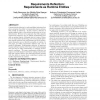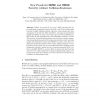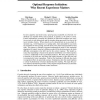504 search results - page 82 / 101 » Explaining Verification Conditions |
ICSE
2010
IEEE-ACM
13 years 10 months ago
2010
IEEE-ACM
Computational reflection is a well-established technique that gives a program the ability to dynamically observe and possibly modify its behaviour. To date, however, reflection is...
CRYPTO
2006
Springer
13 years 10 months ago
2006
Springer
HMAC was proved in [3] to be a PRF assuming that (1) the underlying compression function is a PRF, and (2) the iterated hash function is weakly collision-resistant. However, recent...
CSSE
2008
IEEE
13 years 9 months ago
2008
IEEE
Both teaching and learning multithreaded ing are complex tasks, due to the abstraction of the concepts, the non-determinism of the scheduler, the impossibility of using classical s...
NIPS
2008
13 years 9 months ago
2008
In most cognitive and motor tasks, speed-accuracy tradeoffs are observed: Individuals can respond slowly and accurately, or quickly yet be prone to errors. Control mechanisms gove...
NIPS
2007
13 years 9 months ago
2007
Point-based algorithms have been surprisingly successful in computing approximately optimal solutions for partially observable Markov decision processes (POMDPs) in high dimension...



